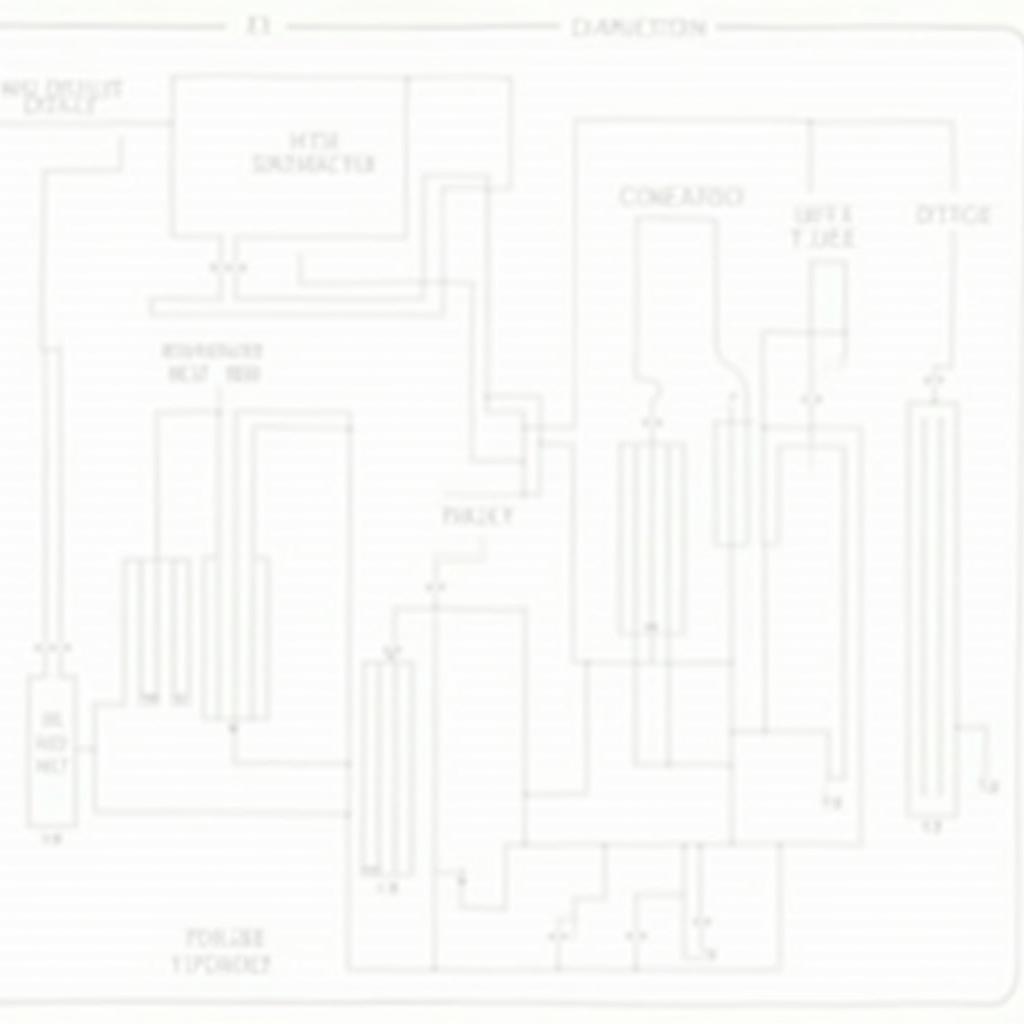A car’s AC system is more than just a comfort feature; it’s essential for clear visibility and safe driving, especially in extreme weather. Understanding the block diagram of AC system service helps car owners and mechanics alike diagnose and maintain this crucial system. This article dives deep into the components, their interconnections, and the service procedures involved, providing a comprehensive understanding of the “block diagram of ac system service in a car”.
Maintaining your car’s AC system involves more than just recharging the refrigerant. A thorough AC service includes inspecting and servicing every component in the system. This can involve leak detection, component replacement, and system cleaning. Regular maintenance can prevent costly repairs down the road and ensure the system functions optimally. Do you know what is involved in car AC servicing? Let’s explore the complexities of this system by looking at the block diagram.
Decoding the AC System Block Diagram
The block diagram provides a visual representation of the system’s components and how they interact. It simplifies the complex network of hoses, valves, and electronic controls, making it easier to understand the flow of refrigerant and the function of each part. This schematic is the roadmap for any AC service, guiding technicians through the diagnostic and repair process.
The core components usually depicted in a block diagram include the compressor, condenser, expansion valve or orifice tube, and evaporator. The diagram also illustrates the flow of refrigerant through these components, highlighting the high-pressure and low-pressure sides of the system. Understanding this flow is crucial for identifying potential problems. For instance, a blockage in the condenser can lead to increased pressure on the high-pressure side, ultimately affecting the compressor’s performance.
 Car AC System Block Diagram with Labeled Components
Car AC System Block Diagram with Labeled Components
A comprehensive understanding of the block diagram allows for efficient troubleshooting. If the system isn’t cooling effectively, a technician can follow the diagram to pinpoint the source of the issue. Perhaps the expansion valve is malfunctioning, restricting refrigerant flow, or the compressor isn’t engaging correctly. By systematically analyzing the components and their interactions, the problem can be accurately diagnosed and addressed. Have you ever wondered how mechanics pinpoint the source of your AC problem? The block diagram is their secret weapon.
Key Components and their Functions
Each component within the AC system plays a vital role in the cooling process. The compressor, the heart of the system, compresses the refrigerant, raising its temperature and pressure. The hot, high-pressure refrigerant then travels to the condenser, where it releases heat and condenses into a high-pressure liquid. This liquid refrigerant passes through the expansion valve or orifice tube, which reduces the pressure and temperature, creating a cool, low-pressure mixture. Finally, the refrigerant enters the evaporator, where it absorbs heat from the cabin air, cooling the air before it’s blown into the vehicle’s interior.
Regular maintenance, including Jaguar car water service, is important for overall vehicle performance, including the cooling system. Understanding the interconnectivity of these components within the block diagram is vital for effectively servicing the system.
Troubleshooting Common AC Issues Using the Block Diagram
The block diagram is an indispensable tool for troubleshooting AC problems. By following the flow of refrigerant and understanding the function of each component, technicians can quickly identify the root cause of issues such as insufficient cooling, unusual noises, or leaks. For example, low refrigerant levels, indicated by low pressure on both the high and low-pressure sides, might point to a leak. Similarly, a malfunctioning expansion valve could result in uneven cooling or frost forming on the evaporator.
“Understanding the block diagram is like having an x-ray vision into the AC system,” says John Smith, Senior Automotive Engineer at AC Experts Inc. “It allows technicians to see beyond the surface and pinpoint the exact location of the problem, saving valuable time and resources.”
Understanding the system and its interconnectedness can also be helpful when considering services like Simran car ac service Mahim.
Conclusion
The block diagram of an AC system service in a car is an essential tool for anyone involved in maintaining or repairing these systems. It offers a visual representation of the complex interplay of components and provides a roadmap for efficient diagnosis and service. Understanding this diagram ensures that the AC system functions optimally, providing comfortable and safe driving conditions. Whether you’re a DIY enthusiast or a professional mechanic, mastering the block diagram is key to effective AC system service.
FAQ
- What is the purpose of a block diagram in car AC service?
- What are the main components shown in a block diagram?
- How does the refrigerant flow through the system?
- How can a block diagram help in troubleshooting AC problems?
- What is the role of the expansion valve/orifice tube?
- Why is regular AC service important?
- How can I tell if my AC system needs servicing?
You might also find valuable resources like car water servicing png images helpful for understanding car maintenance in general.
For further assistance, don’t hesitate to contact us via WhatsApp: +1(641)206-8880 or Email: [email protected]. Our 24/7 customer support team is ready to assist you.

